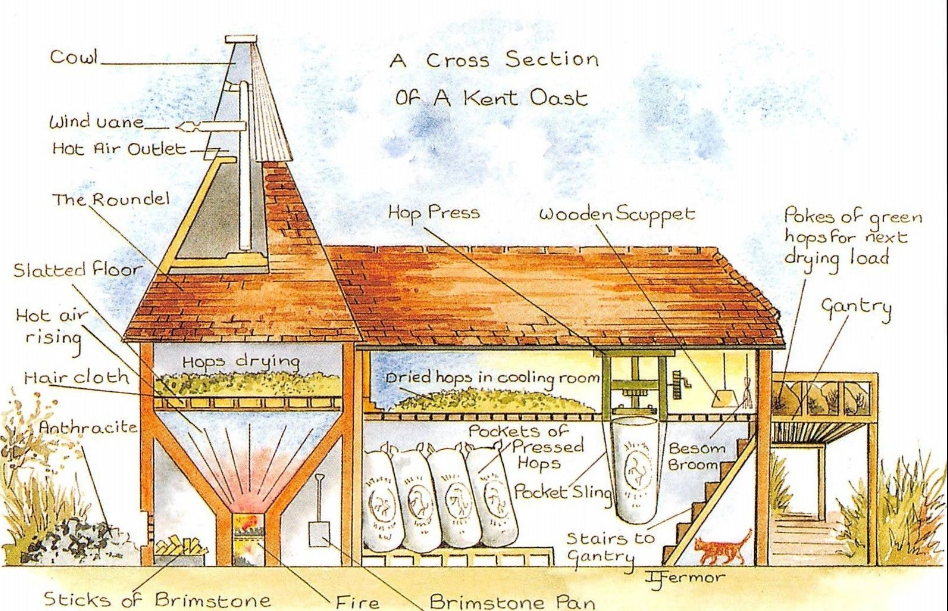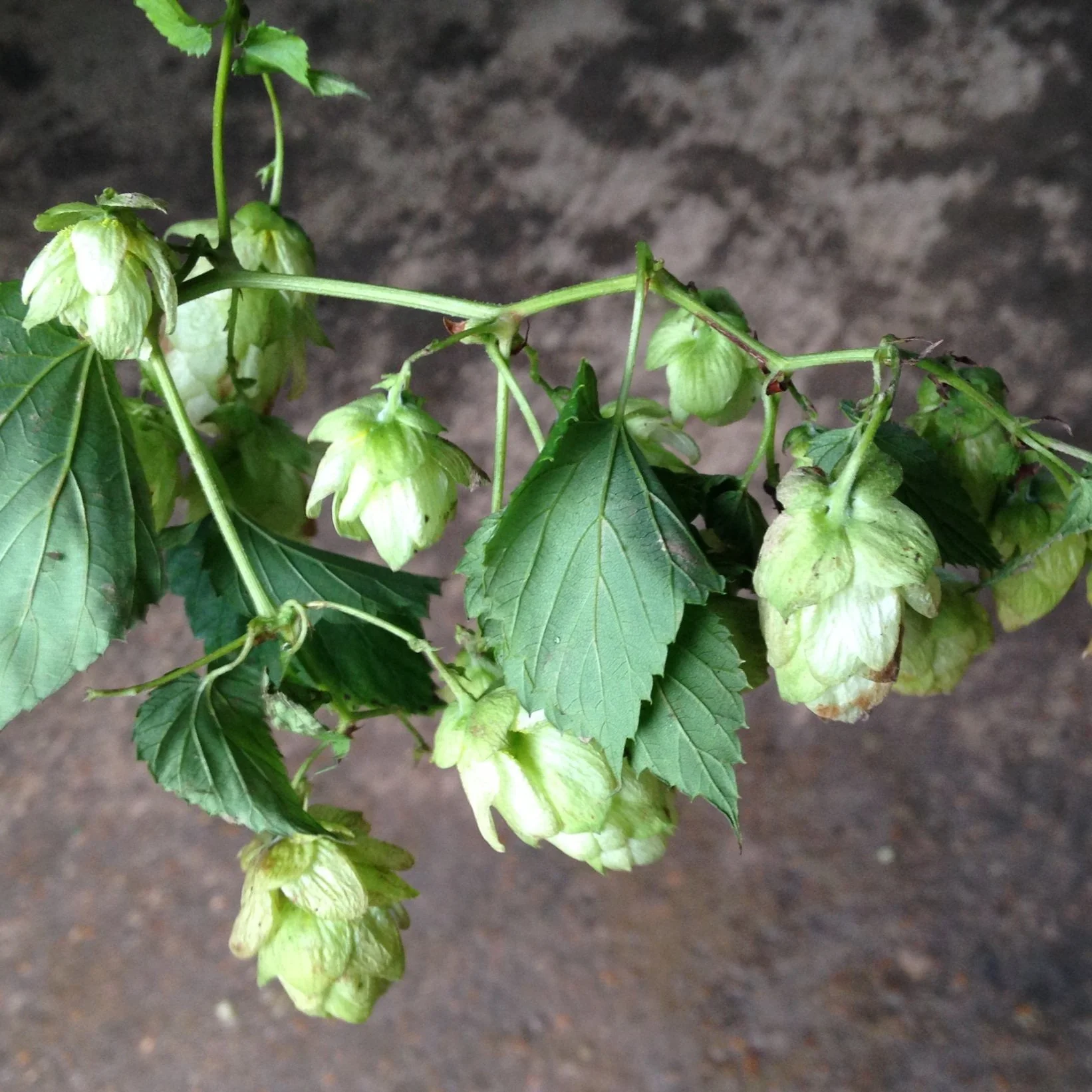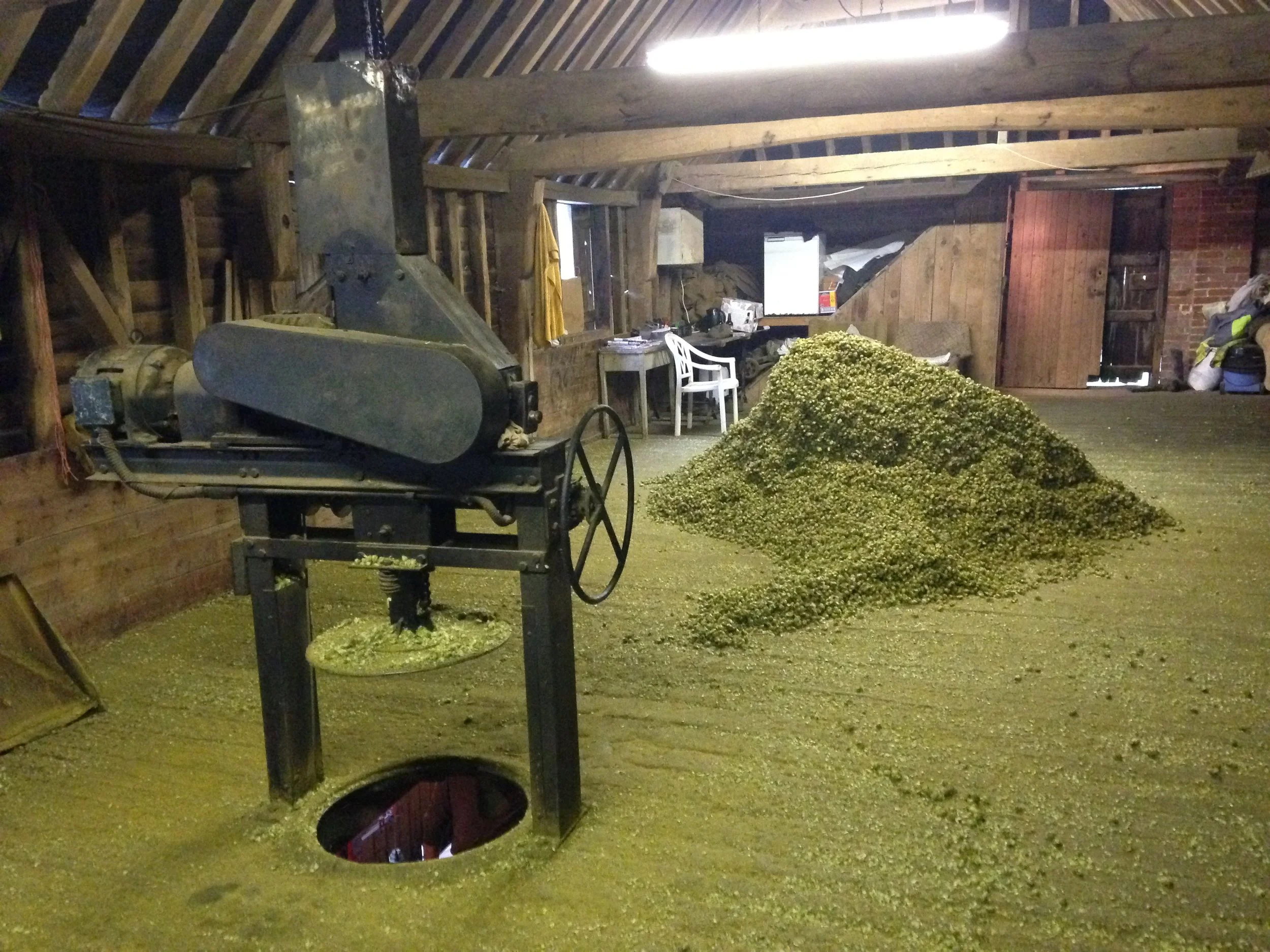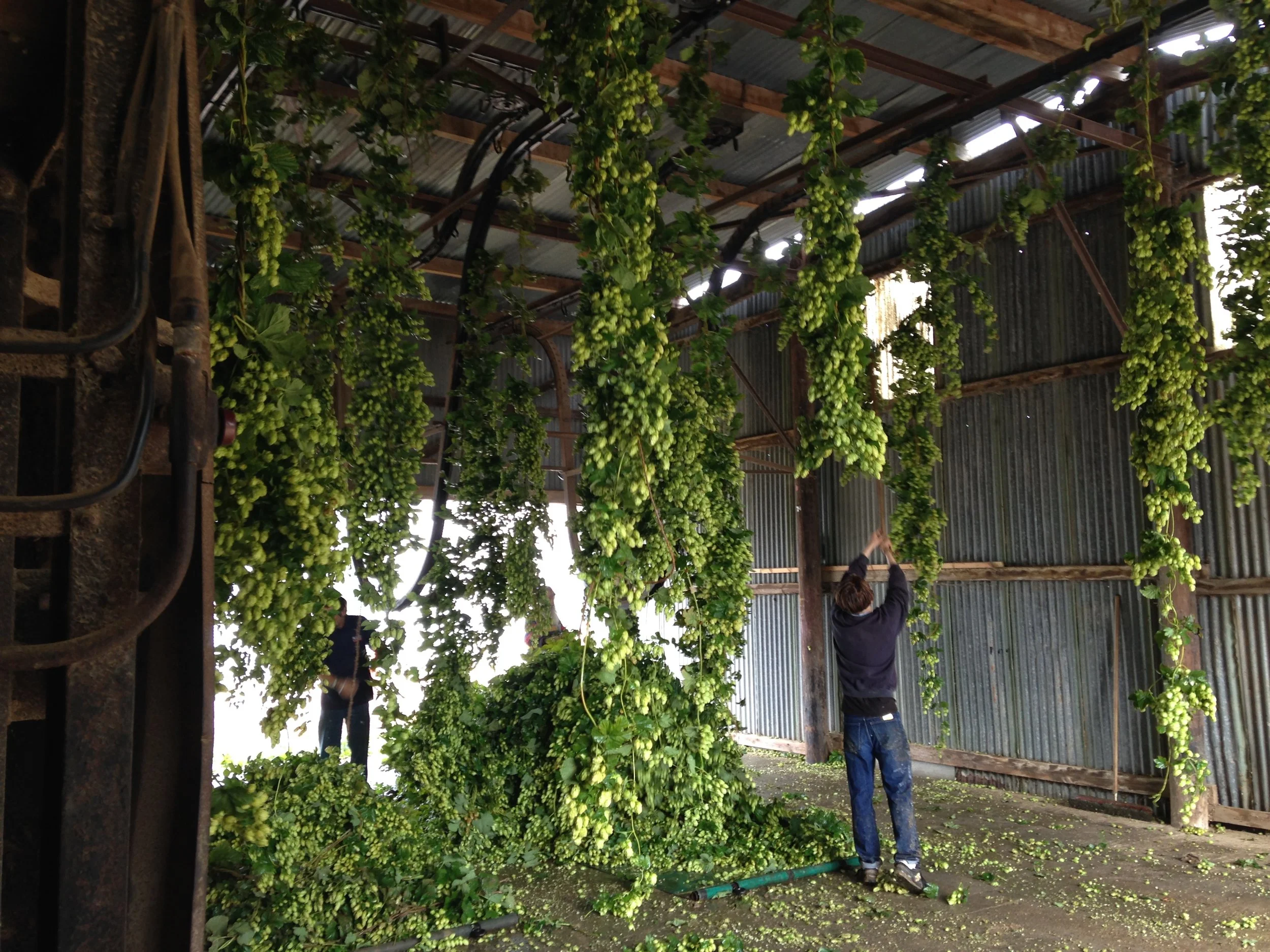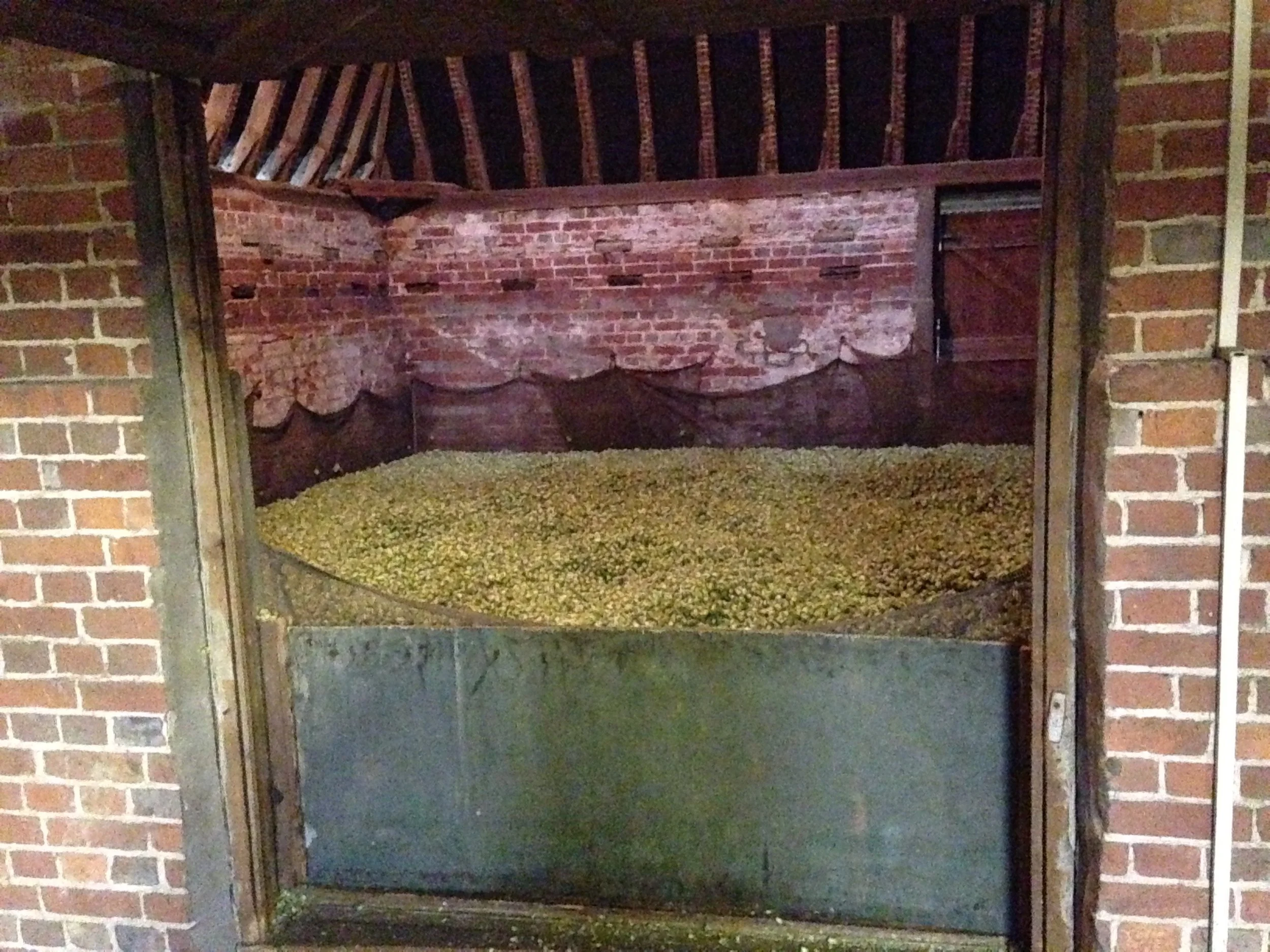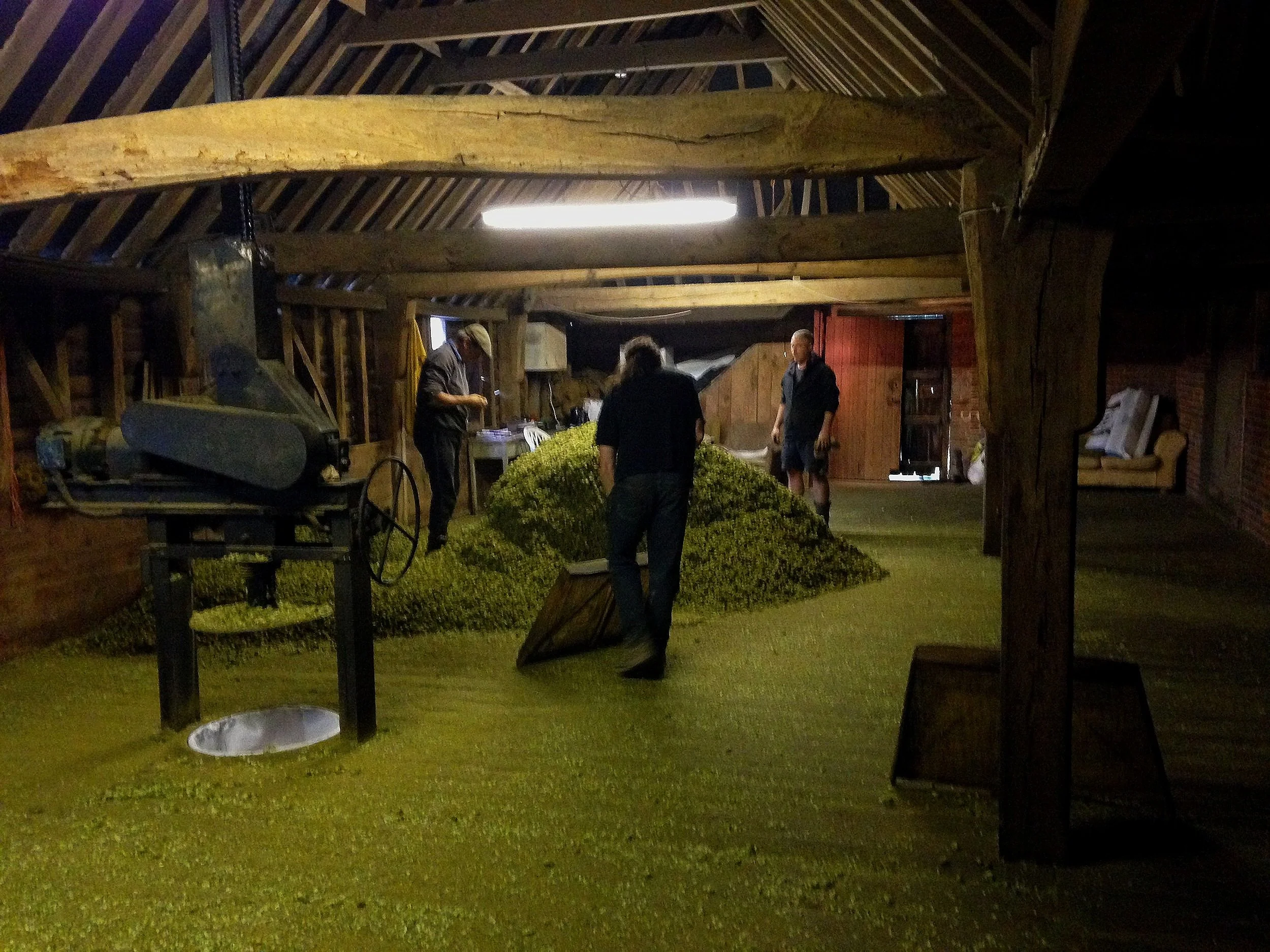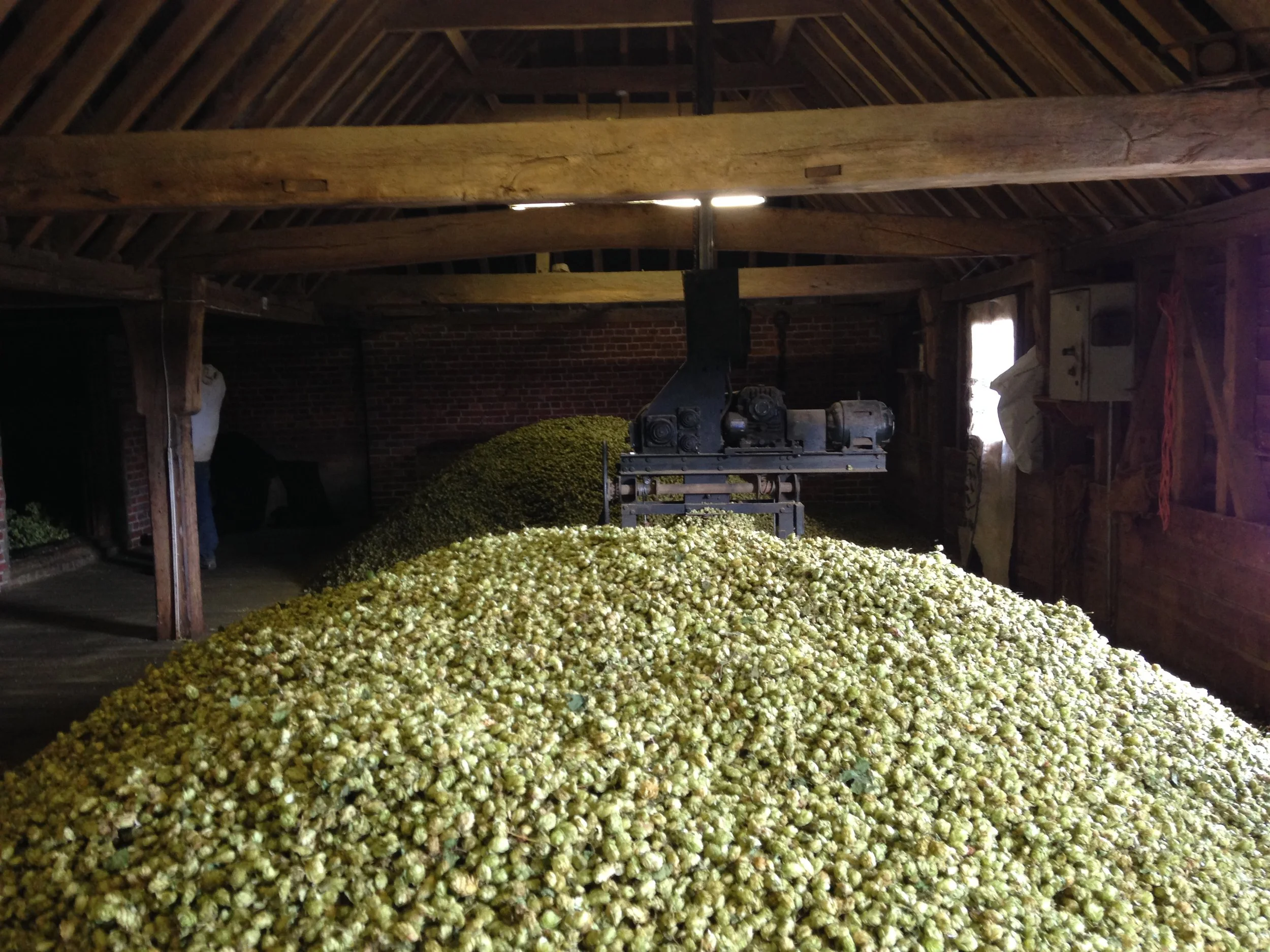
What is an oast house and why are they shaped like that?
Oast houses were built for the task of drying hops. Their distinctive shape peppers the countryside of south east England, with a large number of oasts in Kent and Sussex.
What are hops?
Hops are the flowers of the hop plant Humulus lupulus. They have a strong fruity, citrus smell and have been used for medicinal purposes and to flavour beer for over 300 years. Hop growing is a major part of Kentish agricultural history.
Humulus lupulus is a vigorous climbing plant and is grown up strings suspended from chestnut poles. The field in which hops are grown is known as a Hop Garden. Hops are harvested at the end of summer when the strings are cut down and the hop flowers are stripped from the hop bine.
How does an oast work?
An oast consists of a brick “kiln” topped with a steeply pitched roof and a white cowl hat. Oast kilns can be round (aka a roundel) or square and are usually are connected to a stowage barn where the hops are cooled, packed and stored.
They can also be found in Surrey and Hampshire, but are often known as “hop kilns” in those areas.
After being stripped from the hop bine, the fresh green hops are laid on the slatted upper floor of the oast kiln. The hops are heated from beneath by a smoke free furnace. The hot air circulates the kiln and leaves through the cowl at the apex, drying the hops below. The distinctive white cowls found across Kent and Sussex rotate with the wind, acting as a chimney for the hot damp air to escape.
Once dried, the hops are moved into the upper floor of the barn until they have cooled. They’re then pressed into large hessian sacks, known as hop pockets. To do this, the hop pockets are suspended from a hole in the barn floor and a hop press is used to pack the pockets to the desired weight. The hop pockets are then collected from the lower floor of the barn and transported to breweries to flavour some delicious beers.
Pick
Dry
Press
Hop Picking in Kent
For over 100 years, families from London migrated down to Kent to work as hop pickers during the September harvest. The hop pickers often regarded their time in Kent as a summer holiday. This 1948 film from the BBC Archives shows where the families worked and lived.
Nowadays, seasonal hop picking and processing work still occurs, but it is mostly done by machines.
The Story of Beer
This film features hops being picked and dried in a traditional oast house.
Skip to 7:00 to see the cultivation of hops and 8:00 to watch them being loaded and dried in the oast kiln.
If you’d like to know more about oasts, hops and their history, here some links :

